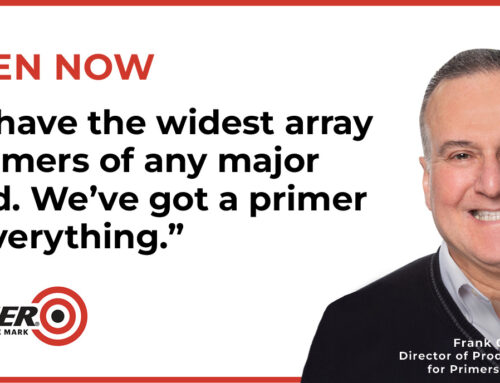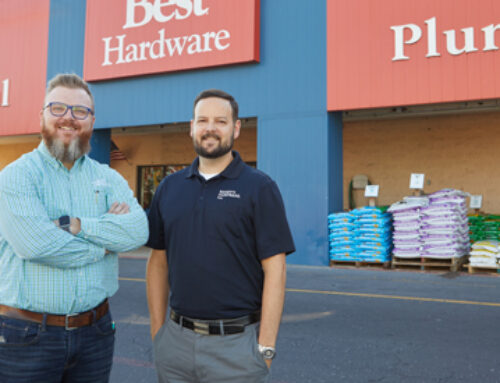From ice storms in Texas to wildfires in Canada, weather in North America continues to become wilder, more extreme and less predictable. Whether you rely on the annual Farmers’ Almanac or check the Weather Channel app on your phone, paying attention to the weather is necessary beyond knowing if you need a jacket or umbrella for the day. Weather can wreak havoc on a small business or it can provide a major windfall, so having a plan for whatever way the wind blows is crucial to weathering the storm.
According to the U.S. Billion-Dollar Weather and Climate Disasters Report from the National Oceanic and Atmospheric Administration (NOAA) National Centers for Environmental Information, in the first 11 months of 2023, the U.S. experienced 25 weather or climate disaster events with losses that exceeded $1 billion. The report found the U.S. has sustained 373 weather and climate disasters since 1980 where overall damages and costs reached or exceeded $1 billion, totaling more than $2.6 trillion.

A National Retail Federation (NRF) report revealed that the weather directly impacts consumers’ shopping habits, with changes in temperature and precipitation affecting purchases. The NRF estimates changes in temperature and precipitation influence over 90% of a business’s weather-driven sales, according to the 5 Myths About the Weather and Its Impact on Retail report from NRF and Planalytics. The report found that favorable weather—hot or cold—brings customers into the store for seasonal items, which can lead to add-on and impulse purchases. Bad weather often keeps customers away and means low sales across the board in all categories and departments.
While retailers can’t control the weather and its impacts—negative or positive—there are ways they can season-proof their operations and post strong sales even when the weather doesn’t cooperate. Read on to discover four ways to handle whatever Mother Nature sends your way and manage the ebbs and flows of the seasons with insights courtesy of fellow retailers who have weathered the storm themselves.
Control What You Can
Instead of trying to rein in something as uncontrollable as the weather, focus on what you can control. Leadership at Hagan Ace Hardware mitigates the shifts from the weather by striving to focus on key strategies and initiatives that are not impacted by weather each year, says director of operations Jacob Hagan. With 11 locations in and around Jacksonville, Florida, the operation sees its fair share of weather fluctuations.

Payroll control is a huge factor when it comes to weather because a business needs extra employees and extra hours before a major storm or during busy seasons but also needs to reduce hours on adverse weather days. Hagan says they strive to minimize controllable expenses when the sales are reduced due to weather. When that doesn’t happen, they take advantage of slow traffic in the stores because of weather and focus on training and customer service.
“We strive to have the most helpful staff possible, so more and longer one-on-one time with our employees and customers is a positive to us,” Hagan says.
Hadlock’s House of Paint, which has three locations in Rochester, New York, rolls with the seasonal changes by looking at other ways to supplement sales beyond paint during slow periods. Paint specialist and social media coordinator Todd Gonzalez says Rochester is notorious for cold, snowy winters so exterior paint sales are slow to nonexistent from November through March.
“Some painters and contractors have adapted and can do a small amount of exterior work inside, but it is definitely at a minimum,” Gonzalez says. “We do try to keep a small amount of exterior inventory available for their needs.” During the winter months, Gonzalez says they focus on products retail customers want and need, including interior paint, wallpaper, window treatments, basement waterproofing products and caulking and sealants to combat winter leaks and cold weather issues.
“Small projects to get homes ready for the holidays help drive our business during the slower winter months,” Gonzalez says. “When people are inside more often, they notice things around the house that could be improved, and we have the products they need ready during this time.”
The employees at Hadlock’s House of Paint also take advantage of the quiet times to catch up on other operational tasks. They focus on cleaning and organizing the store and researching and learning about new products coming from vendors. Gonzalez says when Benjamin Moore transitioned from Arborcoat to WoodLuxe earlier this year, the operation hosted an informative seminar and training demonstration instructed by the experts that was open to all local dealers.
“We try to embrace the slower times. They do make inventory easier, and a little downtime after a busy exterior season is always welcomed as well,” Gonzalez says. “When sales are slow, it gives us an opportunity to clean up our stores and make room for the upcoming spring and summer seasons.”
Becca Kagley, owner and designer at Blevins Paint Center in Maryville, Tennessee, focuses on keeping seasonal items in stock. Whether it’s a streak of cold and rainy days or several days of extreme heat when painters can’t accomplish outdoor jobs, weather plays a large role in the store’s operations. Kagley says heat doesn’t play as big of a role in sales and operation shifts as the colder temps do, but they prepare for both.
“Because of our size we find it is best to cut back the best we can, keeping stock in popular seasonal supplies and allowing the stock in the less-bought categories to dwindle,” Kagley says. “As long as we are not having supply issues and can count on all of our orders arriving in a couple of days, this strategy typically allowsus to scale our orders back tremendously.”
As impactful as the weather can be on operations at Blevins, there are other factors retailers should also be considering, including the current state of the economy.
“The economy itself has its own seasons that have nothing to do with the weather,” Kagley says. “We have seen a drop in sales that I feel are more directly related to current economic issues than what we have seen with the weather.”
Finessing a Niche Category
Refining or adding a niche category can counteract some of the negative effects of weather. Below are three best practices to guide you in managing inventory in a niche category.
Rotate Endcaps Regularly
Get the most out of your endcaps by changing out merchandise once a month. Some progressive retailers even change them out every couple of weeks.
Get Creative
Niche categories lend themselves to being more creative in merchandising and signage, so think outside the box when promoting niche categories.
Update Product Assortments
Niche categories can often include trendy or fad items, so be mindful of what’s trending, removing any products that have gone out of style or are no longer selling.
Establish Strong Relationships With Vendors
Weather impacts only repeat year to year 15% of the time, according to the 5 Myths About the Weather and Its Impact on Retail report from NRF and Planalytics. While it’s important to take into account weather each year, it’s most helpful to “de-weatherize” sales stats, which involves removing extreme weather-based distortions to provide a normalized baseline for planning.
Mike Frattallone from Frattallone’s Hardware & Garden, which is part of the Central Network Retail Group (CNRG), says he plans for average weather each year for his operation’s stores.
“Even though we have had extreme weather through the years, we plan for average, just average,” Frattallone says. “Nothing really more or less.”
It’s important to have good relationships established with your wholesalers and vendors to be able to pivot if the weather doesn’t follow an average pattern for your operation and you need to deviate from your original purchasing plan.

In the past, Nelson says he relied on the 30-day extended forecast when ordering, but now that the store receives several deliveries a week, he can utilize the more-accurate seven-day forecast.
“By getting multiple orders, you can plan to make sure you have the right stock on hand at the right time,” Nelson says. “We always want to be sure we’re taking care of our customers, so we are constantly looking toward weather forecasts and working with our wholesaler to be sure we can get the products we need when we need them. If we’re down to half a pallet of ice melt in March and get a surprise late-season snowstorm, we need to make sure we get more ice melt in for our customers but also for us to use on our sidewalks and steps.”
For large seasonal items, like snowblowers, Nelson says because the store doesn’t have a large warehouse, he doesn’t buy all the snowblowers they will need for that season at one time.
“We might pre-buy 20 units and then pull whatever additional inventory we need through our wholesaler’s warehouse,” Nelson says. “This doesn’t necessarily mitigate the possibility of carryover but it certainly helps.”
For Hagan, the unpredictability of Florida weather requires the operation to rely on its wholesaler to have excess inventory when they need it. Hagan says the quick order and delivery turnarounds their wholesaler offers allow buying managers to place orders and receive them within a couple of days, and they usually prepare for hurricane orders one week in advance.
“Out-of-sequence trucks are a huge factor to help us supply our communities what they need during these storms,” Hagan says. “The biggest advantage is planning. We strive to get our buying and managerial team together to discuss the wins and losses and prepare better for the next one. This type of open communication helps us prepare for future orders rather than reacting.”

“We use our remaining budget at the end of the year to prepare for the new year,” Gonzalez says. “We usually order a smaller amount of inventory at the end of the year, and then plan on taking advantage of special buying offers our vendors present in the early months of the next year.”
Engage in Weather Marketing
Your marketing channels are your best conduits to engage with customers, so take advantage of those communication avenues to promote purchasing seasonal products early.
With 22 stores in Minnesota, Frattallone’s Hardware & Garden is accustomed to seasonal fluctuations, especially when it comes to wild winter weather and excessively hot and dry summers. Frattallone says he never wants to profit from the bad fortune of others, but with severe weather events like snow, the company changes up the messaging to promote winter-weather items. The operation’s advertising reiterates that Frattallone’s has shovels, salt, ice melt, roof melt pucks and more. Frattallone makes sure that each store has what it advertises in stock.
“The fact is we get snow here in Minnesota, and we want to be the place that people think of when it snows,” Frattallone says.
Just a couple of large snowstorms early in the year can improve sales by 5%, Frattallone says. To capitalize on sales, Frattallone’s runs a pre-season sale on snowblowers in October. In 2023, the stores sold over 400 snowblowers before the first snowflake fell, compared to selling 50 in October 2022.
“The 2022 snow season was heavy, so we used that message in our pre-sale marketing, reminding people how challenging the snow was the year before,” Frattallone says. “Even if it doesn’t snow the rest of the season, which is unlikely here in Minnesota, we’ve gotten a good head start on sales.”
Frattallone says he has seen a limit to how far in advance customers are willing to buy, however.
“If we have leftover ice melt in season, there is not a discounted price that you can sell ice melt when it is warm,” Frattallone says. “No customers want to think that far ahead.”

Nelson says they employ a third party to post on their social media channels, which includes a mix of organic posts and posts from the company’s wholesaler.
“Our social media company does a great job using content that is timely and has content prepared so we can get it out and in front of our people,” Nelson says.
For Kagley, creating marketing messages from Blevins for the seasons includes education along with promotion. She says the spring and fall seasons see more sales for exterior products, while summer and winter are heavier in indoor paints and stains, so they market accordingly, providing education applicable to each season.
For example, it is not uncommon for Tennessee to occasionally see unusually warmer daytime temps during the winter months, which allows for some completion of outdoor jobs. Kagley says the employees are always sure to educate customers on checking the temperatures for later in the day and making sure they wrap up those exterior jobs earlier to allow them to start the drying process before the sun goes down and the temperature begins to fall.
“We like to be prepared by making sure we have the appropriate seasonal products on hand and plenty of it, but we also are sure to be a plethora of knowledge for the customer,” Kagley says. “When it comes to paint, its true arch nemesis is freezing temps, so we make certain they know how the weather can affect paint application and performance and ask the right questions so we know the full scope of their project to ensure they get the perfect product and amount.”
Help With Social
Handy Home & Hardware manager Joel Gortmaker shares platforms he uses to make social media posting a breeze and why they work well for his operation.
- Canva is a free online design tool to create social media posts. Users can add photos, text and more to create visually engaging posts. “We use Canva to create most of our posts since it is a great and affordable content creation app.”
- The Meta Business Suite allows the user to publish, schedule and manage all content on the Facebook and Instagram platforms. “The Business Suite allows us to connect our Instagram to Facebook and schedule and create ads from our posts.”
- With the Later platform, marketers can schedule social media posts across multiple platforms, including Facebook and Instagram. “While we sometimes use Later as a scheduler, we mainly use it to add links to our photos and have a place to link our monthly sales flyer.”
Have a Plan A, B and Beyond
For Hagan Ace Hardware, Hagan says having a plan, along with several backup plans, is key to getting through weather shifts. When it comes to winter weather products, plan A includes ordering enough products to make it through the first freeze and ordering them early enough that they arrive in early December.
“We don’t know if we will have one or five hard freezes, so we receive input from our store managers. Their front line expertise lets our buying team know where to go heavier and lighter on product assortment,” Hagan says. “When additional hard freezes come, we react to weather forecasts and order accordingly.”
Because winter weather is rare in Florida, Hagan Ace doesn’t normally have to have a plan B for the management of winter products. When it comes to hurricanes, however, the planning goes beyond initial buying. Hagan says the threat of a hurricane can increase their daily sales four to five times. A direct hurricane impact can see even higher growth, so the stores need to be prepared.
“Hurricanes require much more thought and consideration because what if it does not hit us?” Hagan
says. “The inventory investment for hurricanes is so great that all directors and the owner are at the table.”

“Most of the hurricane orders are already known by our managers, and they have time to review and give insight to heavier and lighter quantities months in advance,” Hagan says. “The largest decision always comes down to how many generators we order.”
No matter where their operation is located, retailers can create a Plan A, Plan B and beyond for any season or weather-related situation.
“It’s all about having plans in place so when or if a major or minor weather event happens, you’re prepared for yourself but also prepared to serve your community,” Nelson says.
Creating a Business Continuity Plan
Hurricanes to blistering heat, cyberattacks to pandemics—no matter what type of disaster your business is up against, a business continuity plan (BCP) is a system of prevention and recovery against a myriad of threats. Designed to protect personnel and assets, a BCP starts with defining all the risks that could impact your operation. From there, you figure out how those risks will impact the business and create a plan for what safeguards and procedures will mitigate the risks and allow for a quicker recovery. To get started writing your own, the Department of Homeland Security offers a BCP template at dhs.gov/prepare-my-business-emergency. At the very least, your operation’s BCP should include these three components.
Emergency Response Routine
Your staff’s safety should be your first priority in any emergency. Setting up an emergency response routine assures you can communicate quickly and effectively with your employees. Your routine should also include backup options in case the primary form of communication is unavailable.
Data Protection Plan
After your employees, your data is secondary to protect in a disaster. Your data protection plan should include steps to take before, during and after a disaster to protect data. It’s also crucial to have the right type and level of insurance in place to cover IT losses.
Frequent Testing and Assessment
No matter how long or intensive your BCP is, be sure to test and assess it regularly so you’re prepared no matter when an emergency happens. Train your employees on the role they play and be sure they understand how they can help.
When the Water Recedes
When devastating floods hit these retailers’ operations, they turned to their communities to recover. Learn more at PDRmag.com/weather-recovery.









